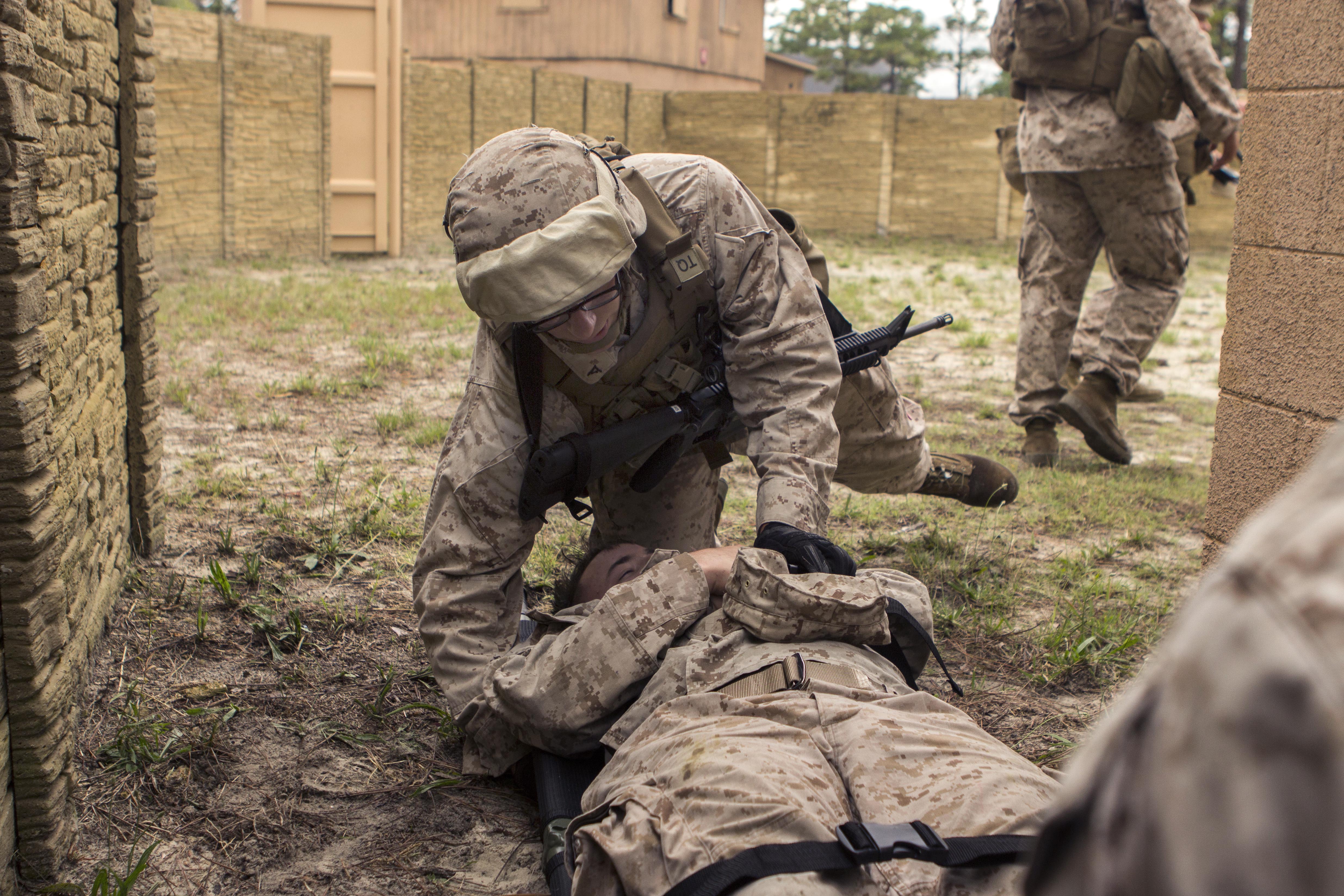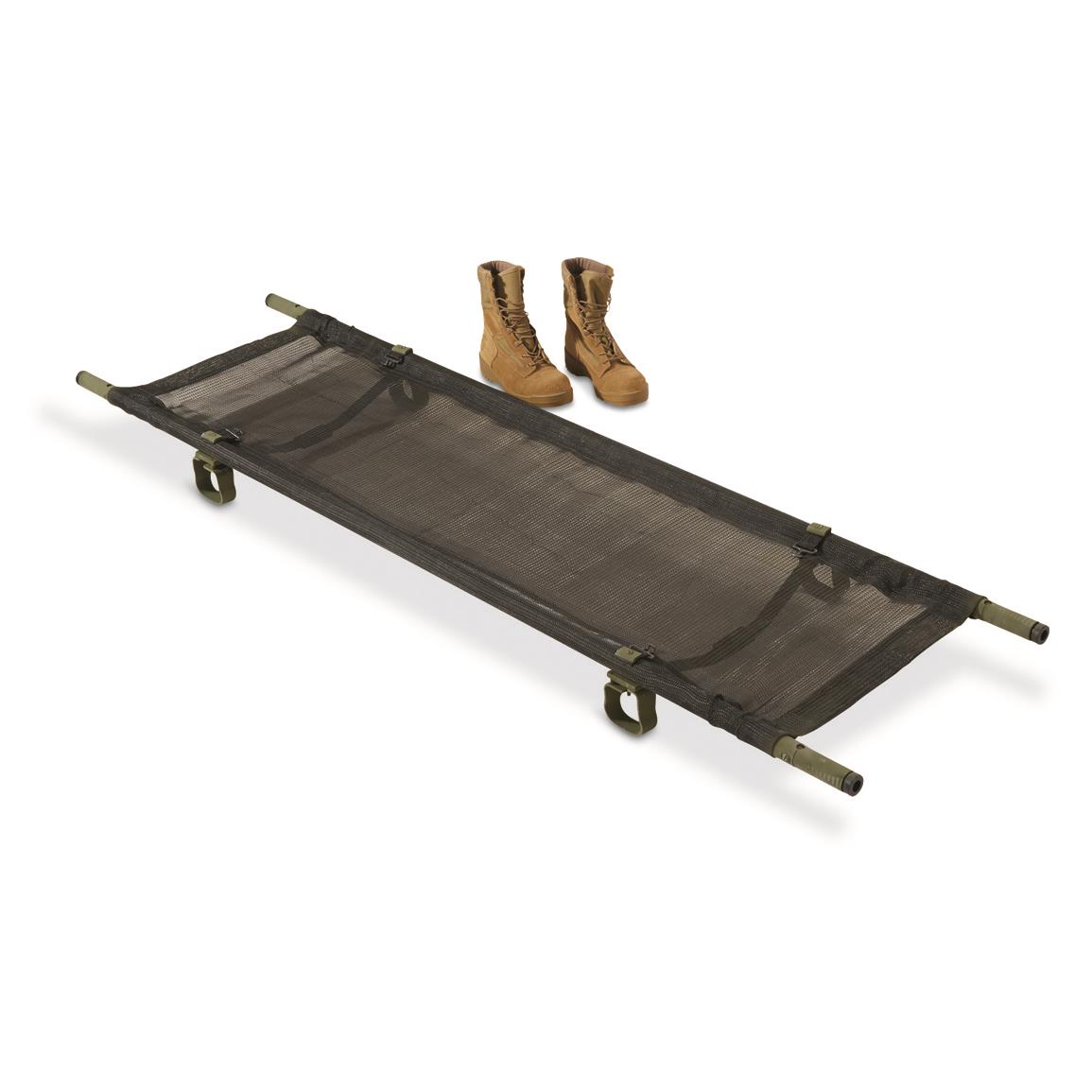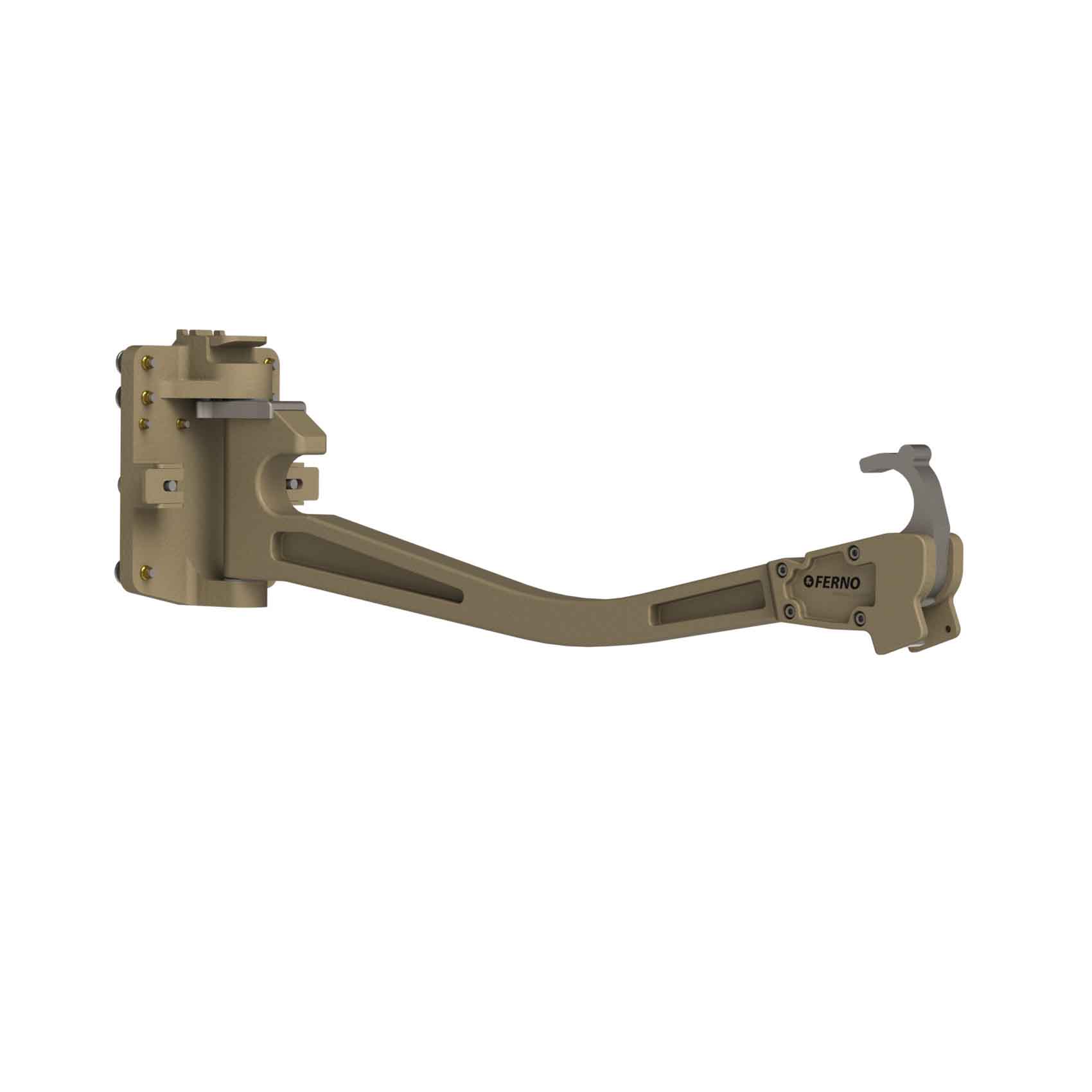Litter Military - The Litter Carrier is a lightweight, stable device equipped with two large non-pneumatic wheels designed to transport injured people over rough terrain. These flat tires keep the unit mobile at all times without the need for an air pump.
When the support legs are in the transport position, one or two people move the patient easily. When the support legs are in the "static" position, the stretcher carrier is a stable and stable support for the patient.
Litter Military
 Source: api.army.mil
Source: api.army.mil
When not in use, the bin can be easily folded for storage. The EL3000 military litter container was very useful for transporting and transferring wounded patients (or materials) to field hospitals and field hospital areas, AMPs, or to provide access to helipads or airlift areas in emergencies or disasters, natural
Hh-M Black Hawk Design And Features
on a large scale. 9935000 - Straight Stretcher, Aluminum: The second model of non-collapsible stretcher used by the Medical Department, introduced in 1943. The straight aluminum stretcher consisted of tubular aluminum posts (1.54 inches in diameter and 77 inches long) that had a canvas bed,
sewn between them (item # 9935200, 6). feet long and 22 ½ inches wide) marked with the maroon insignia of the Caduceus Medical Department in a white circle and the corresponding branch of the service. When the stretcher was placed underground, it was supported by two metal stirrups (5 ¼ inches high and 3 ¾ inches wide) that were securely fastened to the posts.
These bolts not only secured the stirrup but also prevented the canvas bed from sliding on the post. The canvas was stretched over single-jointed sheet bars that extended transversely to an intersection between adjacent stirrups. The weight of this litter was about 15 pounds.
9937600 - Scrap, Straight, Steel: Same design as item # 9935000, although introduced in 1943 as a war economy model designed to make cuts to save relatively expensive and highly sought after aluminum metal. War industry shortages necessitated a new study, and the aluminum posts were now replaced by tubular steel posts (1 ¼ inches in diameter and 77 inches long), and the stirrups and jointed spreader bars were now made of galvanized metal.
Background Information
Litter racks come in a variety of designs and materials, and a number of different methods have been used to secure the litter to the vehicle. Above are some examples of period illustrations showing the use of waste racks on modified vehicles.
Below are charts prepared by Colonel H. W. Doan for the Surgeon General at his request. Waste Producer Brands – Different producers are responsible for producing waste. Some date from 1940 to 1945, such as the Zimmer Splint Co.
 Source: media.defense.gov
Source: media.defense.gov
(eg 25 Nov 1940), Simmons Co. (eg 24 Aug 1942; 23 Apr 1943), Zimmer-Thomson Corp. (eg 1942, 1944). and 1945) and Lake City Mach. Store (May 15, 1944). Illustration showing item #9917500 Carrier, Field, Acceptable. The diagram above shows the Garbage Carrier, although it is not shown here whole and not in a collapsed state.
This example was made by the Jerald Sulky Company Photo courtesy of Nelson Dion. Skedco has long prided itself on its wide range of military specific CASEVAC, MEDEVAC and field rescue equipment. For more than 30 years, our many military Skeds, stretchers, backpacks, medical kits and more have served our men and women in uniform.
Litter Use
GS-07F-188AA The HH-60M MEDEVAC helicopter integrates advanced technological improvements such as more powerful engines and instruments. It is equipped with an improved rotor system including wide blades. It is capable of performing emergency evacuation missions in difficult weather conditions, day and night.
The helicopter can fly at a speed of 140.7k and a range of 275.2nm. This range can be further increased by installing a 400-gallon external fuel system. The empty weight of the helicopter is 14,470 lbs and the maximum take-off weight (HOGE) is 21,414 lbs.
Illustration showing the various markings available on US Army wreckage: (A) 1940-1942 - Greek Red Cross, with the abbreviation MED. DEPARTMENT. US in black, often followed by date of manufacture in black (no circle) (B) 1943 – Caduceus red, with US ARMY and MEDICAL DEPARTMENT insignia in red, on all white circle (C) 1944 – Caduceus black, with specifications
of US ARMY and MEDICAL DEPARTMENT in black, with black circle outline (one circle outline) (D) 1944-1945 - Black caduceus, with US ARMY and MEDICAL DEPARTMENT insignia in black (no circle) - also applied in maroon or red, although in the end, black prevailed.
Litter Carrying Jeeps
A stretcher is also used when the patient reaches the aid station, often as a makeshift operating table. The table will be constructed using two medical chests folded up, or alternatively Saw Horse field stretchers, often produced by Medical Department personnel.
An example of these on-the-spot solutions can be seen in the photo above. The modern combat ambulance is equipped with sealed plastic bubbles to create a sterile environment for patients. The helicopter is also equipped with an environmental control system, an integrated EKG machine, en-route medical assistance, aspiration, patient monitors, an infrared system and a built-in external electric rescue elevator.
 Source: image.sportsmansguide.com
Source: image.sportsmansguide.com
9934700 – Toilet, Ambulance, Cot: Collapsible metal sponge designed for use in military ambulances. The basket had two folding sections that allowed it to be adjusted according to the patient's needs. A small foot rest was arranged at the bottom of the stretcher and two arm rests at the sides.
The stretcher also contained four large wheels that could be used to get the stretcher on and off the ambulance. It is constructed of a metal frame covered with a large padded mattress. This litter is officially designated as a Bomgardner type.
The litter was completed with two fasteners to secure inside the ambulance. Finally, stretchers were used to transport victims while vehicles were moving. For example, there are many illustrations and photographs from the period showing the use of improvised litter boxes attached to ¼ ton trucks, and it was common in the ETO for these vehicles to also be used with a litter squad in the First Echelon of Medical Evacuation.
Litter boxes are also widely used in Echelon II for medical evacuation, at which point the casualty is transported, often without the use of an ambulance, to the collection station and/or cleaning stations. 9708000 - Stretcher Strap: A first aid kit component net designed to help relieve the weight of the stretcher + patient.
The individual equipment of the soldiers of the medical department included two belts for carrying litter. These straps (with metal slip rings) were attached with clips to the front and rear suspension rings (item # 9709500) and the trash arms were inserted into the slots thus formed.
Special Features: + Safe-to-fly US Army rotary wing + Retractable, ergonomically designed handle + Self-locking hinges + Slip-resistant, chemical-resistant ripstop fabric tested and approved by federal and private laboratories using combat agents at live + 6 IV- attachment points + 2 patient safety straps Dimensions: + Folded with arms folded: H 20.5" x W 8.5" x L 9.5".
+ Open with arms folded: L 78" x W 22.5" x D 6". + Open with arms extended: L 90" x W 22.5" x D 6". + Weight: 16 lb 6 oz (7.4 kg) + Payload: 1,200 lb (544.3 kg) + Clearance: 1.5 in.
Added (on both models): + Backrest (optional): 90/45 degree angles See Talon® Backrest + 33in. Garbage Racks (Optional): 33" Visual Garbage Racks 33". Litter racks The cockpit includes four multi-function color displays to increase situational awareness.
 Source: image.invaluable.com
Source: image.invaluable.com
It is also equipped with a dual digital flight control computer, moving chart, storm range and radio systems, as well as a GPS/inertial navigation system. Nose-mounted FLIR sensors provide increased visibility for search and rescue missions.
9938600 - Stretcher Safety Strap: A type of elastic fabric strap designed to secure the patient to the stretcher. The straps had two spring-loaded metal clips attached to either end and designed to fit around the tubular posts of the Bin.
The strap was adjustable and according to the March 1, 1944 Medical Supply Catalog: Undoubtedly one of the most useful tools for combat medics and military personnel involved in the first series of medical evacuations was the US Army stretcher.
A litter is a stretcher carried by two or four porters to evacuate the sick and wounded. All patients who were unable to walk, with or without assistance, were classified as waste cases. Debris evacuation was proposed in several different forms, all designed to facilitate as quickly and efficiently as possible the transport of a casualty from the battlefield to the medical center intended for treatment.
The purpose of this article is to examine the different types of stretchers used by the Medical Department during World War II. The tactical stretcher stand is designed to lift a patient onto a MedEvac4 tactical stretcher or equivalent.
Used by a medical professional to access the patient at waist height. The product is sold in pairs. It is compact and easy to store. The Tactical Litter Stand weighs 3.64kg and is made from lightweight Altrunium® aluminium.
Of course, one of the most frequent tasks of the US Army Litter was to evacuate wounded personnel from the front lines. This was often the first stage of a medical evacuation and stretcher bearers carried wounded men over rough terrain to the battalion or regimental aid station where the casualty would be further searched.
Each stretcher had the same dimensions when open - this allowed the patient to move through the different levels of medical care, which meant easy movement of several types of stretcher without removing him from the stretcher he started his journey with - he saved
 Source: ferno.com
Source: ferno.com
valuable. avoid time and danger to the patient! The US Army awarded a contract to supply 20 HH-60Ms and install auxiliary power unit kits in March 2008. The first version of the HH-60M MEDEVAC, equipped with a dedicated clinical cabin, was completed in August 2008. It was unveiled at the Center.
United States National Guard Association Conference held in Baltimore, Maryland in September 2008. Special Features: + US Wing Air Force Certified Safe + Double sided design for reliable long term storage. + Ergonomically designed handle + 2 IV attachment points + 2 patient securing straps + Tear-resistant, chemical, tear-resistant fabric tested and approved by federal and private laboratories using live combat agents Dimensions: + Fold: In 45,
5" x W 7.5" x D 8" + Open: L 90" x W 22.5" x D 6". + Weight: 16 lb 8 oz (7.5 kg) + Payload: 1,200 lb (544.3 kg) + Clearance: 1.5 in. Added (on both models): + Backrest (optional): 90/45 degree angles See Talon® Backrest + 33in.
Garbage Racks (Optional): 33" Visual Garbage Racks 33". Dump Truck Stands The standard ¼-ton truck (aka Jeep) is designed to carry a load of 800 pounds. A man and his equipment will weigh about 200 lbs.
Four (4) men constitute a full payload for the vehicle; driver plus 3 patients; or driver, co-driver and 2 patients. Two (2) patients can be transported by jeep without any racks or special modifications. This method involves placing one stretcher on top of another and extending about 1½ feet to the side of the vehicle.
Another stretcher is placed longitudinally next to the driver of the vehicle (see diagram). Another method can be used, which requires some adaptations in the form of additional supports. Two (2) litter patients will then be transported lengthwise, side by side;
one behind the driver and one behind the assistant driver. United Rotorcrafts Air Methods division was awarded a $17 million contract to supply 48 HH-60M MEDEVAC interior systems in October 2008. It was also awarded a $44.8 million contract to supply interior systems in March 2013. The delivery
expected to be completed by 2017 Illustration showing World War II towing period plans for a permanent litter rack designed for 1/4 ton truck use. The rack itself is designed in such a way that it can be constructed from materials commonly found in the field.

9938000 - Basket, Collapsible, Aluminium: A double-folded stretcher with an aluminum frame, intended for re-use primarily by airborne troops and sometimes, though not often, issued to mountain troops. The folding aluminum stretcher was secured in the folded position using item # 9938300;
Litter belt, folding stretcher. 9901700 - Toboggan Stretcher Adapter: This was a simple adapter to allow any US Army stretcher to attach to a standard toboggan. It was designed to allow the wounded to be carried up snow-covered mountain faces.
Two of item # 9901700 were needed for each slide when a bin was to be attached. 9936600 - Litter, Straight, Wood, M-1943: The non-folding wooden frame Litter was introduced in early 1944. On the one hand, it was developed to be a lighter design for transporting than the Litter Carrier over longer distances, and
on the other hand, it was simply modified in view of the temporary shortage. made of steel. Wood was now chosen for the posts. The litter was marked with the general black markings of the medical department (no circle).
Sikorsky was awarded a five-year contract to supply 257 UH-60M Black Hawk and HH-60M MEDEVAC aircraft to the US military and US allied nations in June 2017. The contract also includes an option for an additional 103 aircraft and, if executed, would bring the total
of the contract is $5.2 billion. Due to the rapid pace of World War II, there was an urgent need to quickly evacuate wounded personnel from the battlefield. As a result, some units began to adapt vehicles at their disposal to transport army garbage.
The ubiquitous and rugged 1/4-ton truck was one of the best vehicles to modify and adapt. Many of these field modifications were made by the medical personnel themselves, although toward the end of the war the then-Surgeon General requested that each division prepare plans for its modifications.
The HH-60M helicopter is integrated with a Medical Evacuation Mission Equipment Package (MEP). Provides aeromedical assistance and ambulatory patient transport services. The helicopter can be reconfigured to perform missions including personnel transport, search and rescue, supply, aerial reconnaissance, cargo transport and forest fire suppression.
An additional, though unusual, use of US Army junk was to transport the MD crate between installations. For example, these chests were often heavy so that they could not be carried over difficult or rough terrain by just two men.
As a result, the Army ordered a method of placing the crate on top of the trash, a method that was later used by 4 men. The US Army ordered 12 HH-60Ms in December 2008 and signed a contract option for HH-60M helicopters in August 2009. The Vermont Air National Guard's Aviation Company C, 3rd Battalion, 126th Aviation Regiment delivered a total of 12 helicopters
for medical evacuation missions. in Iraq in November 2010. The South Dakota Army National Guard (SDARNG) began operating two of six HH-60M Black Hawks as part of the US Army's Aircraft Modernization Program in October 2014. The new helicopters will replace the current UH
-60 A/L model of the SDARNG Black Hawk helicopter to provide enhanced operational capabilities in state and federal operations.
military litters stretchers, military litter carrier, military litter carry, types of army litters, collapsible litter military, army medical litter, army litter, army folding litter